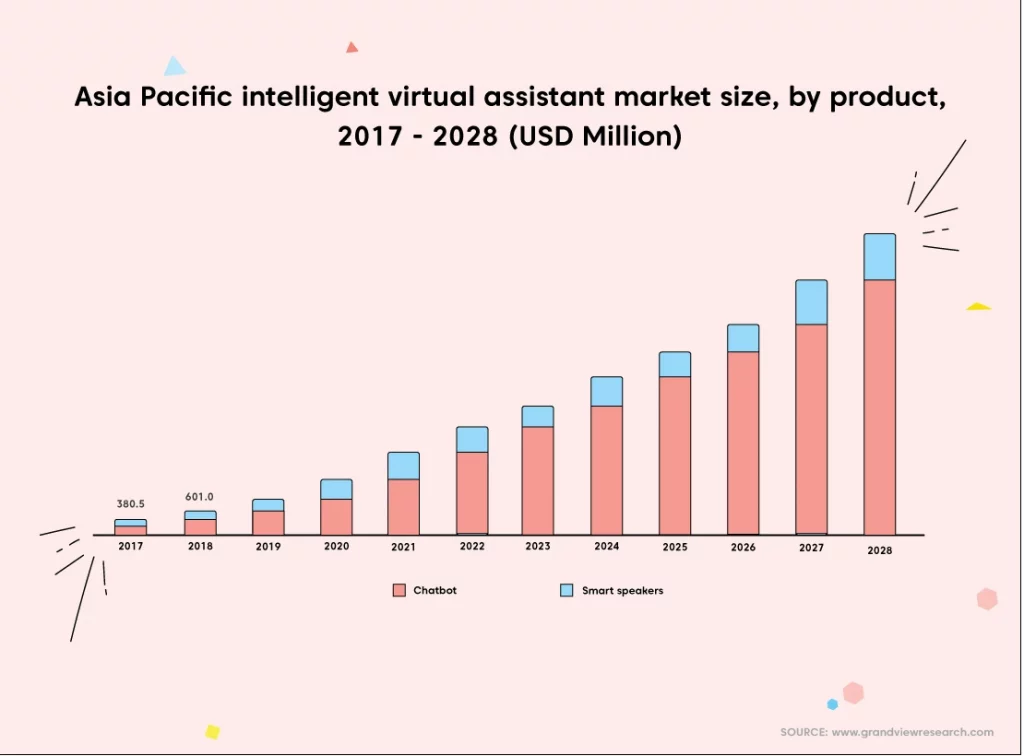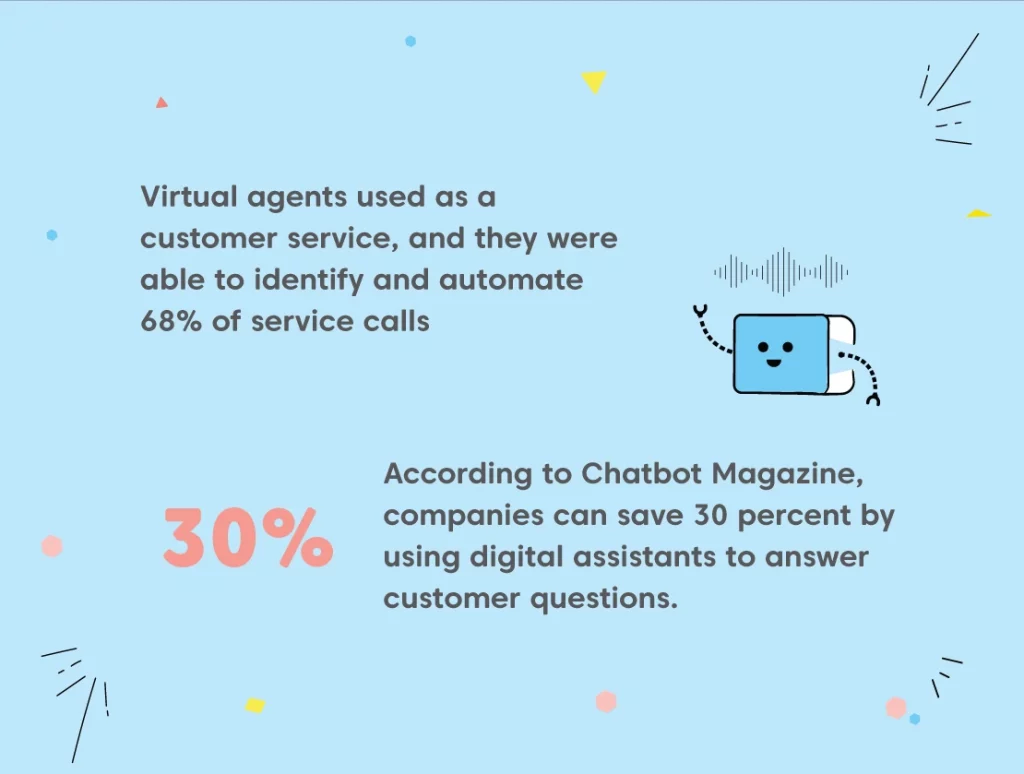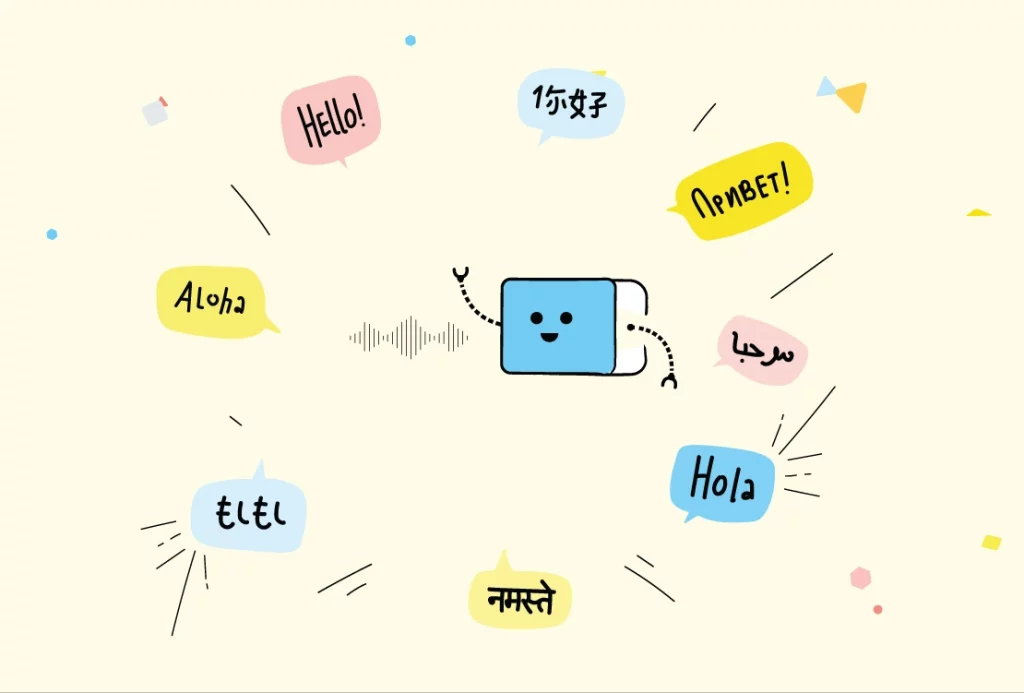Your customer support and experience teams today face multiple challenges on a daily basis. There is constant pressure to reduce cost per interaction. In addition, customer expectations are higher than ever, tickets are piling up and customers waiting to get a response are hitting the roof.
AI-powered digital assistants can be the solution to all these problems and can enable your service representatives to deliver the best support possible. Let’s have a look at what digital assistance is and how it can solve various agent interaction challenges.

What is AI-powered digital assistance?
Digital or virtual assistants are automated computer programs, also known as predictive chatbots that simulate human-like conversations with users over the internet.
People often confuse digital assistance with regular chatbot technology. Digital assistants aren’t regular rule-based chatbots used to answer simple questions. They are much more sophisticated and use advanced artificial intelligence (AI), NLP, NLU and machine learning to learn as they go and provide a personalized experience to the customers.
Businesses are realizing that retaining customers is cheaper than acquiring new ones. This is why more and more businesses are adopting the capabilities of digital assistance to streamline their CX efforts. It is expected that by 2025, AI will power 95% of customer interactions. Businesses that fail to prepare for this future will face the risk of being left behind by their competitors.
8 biggest customer service challenges and how can intelligent digital assistants solve them
1. Dealing with angry customers
Every once in a while, customer service reps are exposed to an angry customer. There are many reasons that can cause customers to lash out, including, poor customer service or staying on hold for too long. Even having to repeat their problems too many times can annoy customers.

In order to avoid such situations and make sure customer problems are resolved quickly, agents can use an interactive agent assist dashboard to monitor customers’ journey across channels in a single unified view.
This will help the agents get superior context and a deeper understanding of customers’ pain points, for better problem resolution.
2. Lack of extensive product knowledge
A lot of times the support teams get asked complicated questions. While the agents are sufficiently-trained to handle most queries, they may not be well-versed with a deep understanding of several technical attributes of a product or service.
In situations like these, with the help of intelligent digital assistants, agents can direct the customers to a knowledge base like an FAQs page or a blog. This will help the customers self-solve their problem and in turn, reduce the query resolution time.
3. Unattended service tickets
The pandemic has led to a surge in eCommerce and accelerated digitization. Uncertainty brought about a change in buying behaviour as consumers took to online shopping to meet their daily needs.
Amid this shift, brands across the globe started experiencing record-high customer engagement. As a result, customer support teams today are inundated with service tickets. By not tending to these tickets in time, you run the risk of making your customer unhappy. Research suggests that every 1 in 3 customers will leave a brand after just one instance of bad service.

Moreover, 80% of the questions received by support teams are repetitive in nature. When agents use digital assistants to resolve such queries, they can free up their time to handle more complex customer problems.
4. Prolonged resolution times
Modern customers are always on the go and want instant solutions to their problems. In fact, they want agents to reply to them immediately and 71% of consumers believe that a quick response from your service team can drastically improve their customer experience.

AI-powered digital assistants can expedite the workflow by handling multiple customer requests simultaneously. They can also free up human agents’ time to focus exclusively on intense tasks, thus saving companies’ money.

5. Complex query transfer processes
Customers get annoyed when their call is transferred to multiple departments and they have to repeat their problem again and again. It also means they have to spend a lot of time staying on hold and research suggests that 33% of customers are most frustrated from having to wait on hold.
To avoid this, customer service reps can transfer calls using the agent assist dashboard which also transfers customer data to the concerned team member. This saves time and optimizes collaboration for quicker ticket resolution.

6. Increasing customer expectations
Customers today expect to connect with a brand wherever they want, whenever they want. They are accustomed to getting on-demand services and anything less than that can make up for a bad experience.

Digital assistants enable brands to have an omnichannel presence and provide 24/7 support to the customers. Omnichannel doesn’t only mean allowing customers to get in touch with a brand over various platforms like WhatsApp for business, Facebook Messenger, Instagram, website, text messages, etc. It also means that if customers switch from one channel to another, they can pick up their journey right from where they left.
7. Multilingual support requirements
Digitalization has made it possible for businesses to easily scale their services across the globe. Well, around 6500 languages are spoken in the world today and, about 43 per cent of the world’s population is bilingual. So, it’s normal for support agents to come across customers who speak in a foreign language.

Virtual digital assistants can prove to be very helpful and inexpensive when it comes to handling thousands of customer queries at once in multiple languages. They not only provide multilingual customer support but also understand customers’ intent to modify customer experience.
While predictive chatbots cannot fully replace human agents, they do reduce the need to hire multiple agents who are proficient in speaking different languages.
8. Maintaining consistency in service
Unlike virtual assistants that run on advanced technologies, human agents do have certain limitations. They are susceptible to mood swings, fatigue, bad health, anger and other emotions. Sometimes even the workload can be too much and all of this can reflect in the way they interact with customers.
Digital assistants, on the other hand, never get tired and need no break. Their performance remains consistent regardless of how much work they do and they’re always functioning at full capacity.
Key Takeaways
There are always going to be certain challenges when it comes to customer service. Different customers will have different opinions and behaviours. The best you can do is make sure that you provide a seamless experience to your customers so that you can turn these challenges into relationship-building opportunities.
It’s often seen that the number one concern of companies planning to deploy interactive assistants is that they do not provide a human touch to the conversation. Well, that’s not the case with AI-powered digital assistants.
AI chatbots have much more advanced functionality that requires less training data. Such virtual assistants can converse in a human-like manner and use intent recognition that goes beyond languages and touches upon cultural nuances and slang across regions. Thus, positively impacting your CSAT, NPS, revenue growth, and savings.
With digital assistance in your quiver, you can empower your agents with the right tools to improve customer satisfaction. Talk to our experts today to know more about how our CX automation solutions can resolve your toughest agent interaction challenges.
















